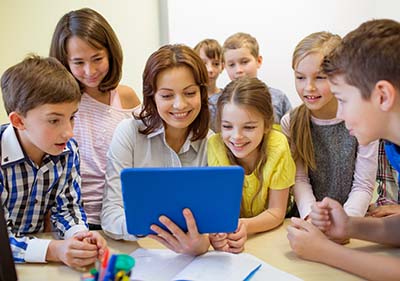Blended Learning
Edwords (ěd · words) n. 1. PreK-12 glossary breaking through buzzwords to solve the challenge of a common definition. 2. Renaissance® resource to help educators take part in discussion, debate, and meaningful discourse. 3. Educators’ jargon buster.
What is blended learning?
Blended learning provides a digital framework that puts your students in control of a particular element of their learning, whether it’s place, path, or pace. Educators drive instruction, but a blended approach provides additional opportunities to enrich learning.
Is blended learning replacing the traditional classroom?
No. Rather, blended learning is meant to identify what is working well in the traditional classroom, and what might be better suited as digital content. It is designed to harness the power of technology and enhance the traditional classroom, not detract from it. Blended learning is more than just replacing a traditional method, such as handing out physical math worksheets, with the same thing online. When blended learning is implemented correctly, it lends to personalized learning for each one of your students.

How do I incorporate blended learning in my classroom?
There is a common misperception that just by incorporating technology, such as an iPad or Chromebook, in the classroom, an educator is facilitating blended learning. Instead, blended learning is taking that next step and using technology to give your students authority over their learning. For example:Say your students are learning about dinosaurs. For one lesson, you ask them to draw a Tyrannosaurus rex and in environment the animals preferred. To help students, you provide a video overview of the Tyrannosaurus rex from YouTube and give your students independent work time.
In the setting above, you’re incorporating blended learning in your classroom. With the help of technology, students watch the video at their own speed, replay certain parts, or pause to help with their illustrations. This gives students control over the pace of their learning and, in turn, partial authority over it. It doesn’t take away from the original lesson, but adds to it.
Why does it matter, anyway?
Blended learning has the potential to free students from the traditional school day. It gives you a chance to help more students one-on-one. With technology, we have access to so many resources that can aid students and enhance lesson plans. The challenge is using them in a way that adds to the learning experience.
References
- Holland, Beth (2017). Are We Innovating, or Just Digitizing Traditional Teaching? . Edutopia . Retrieved from: https://www.edutopia.org/article/are-we-innovating-or-just-digitizing-traditional-teaching-beth-holland.
